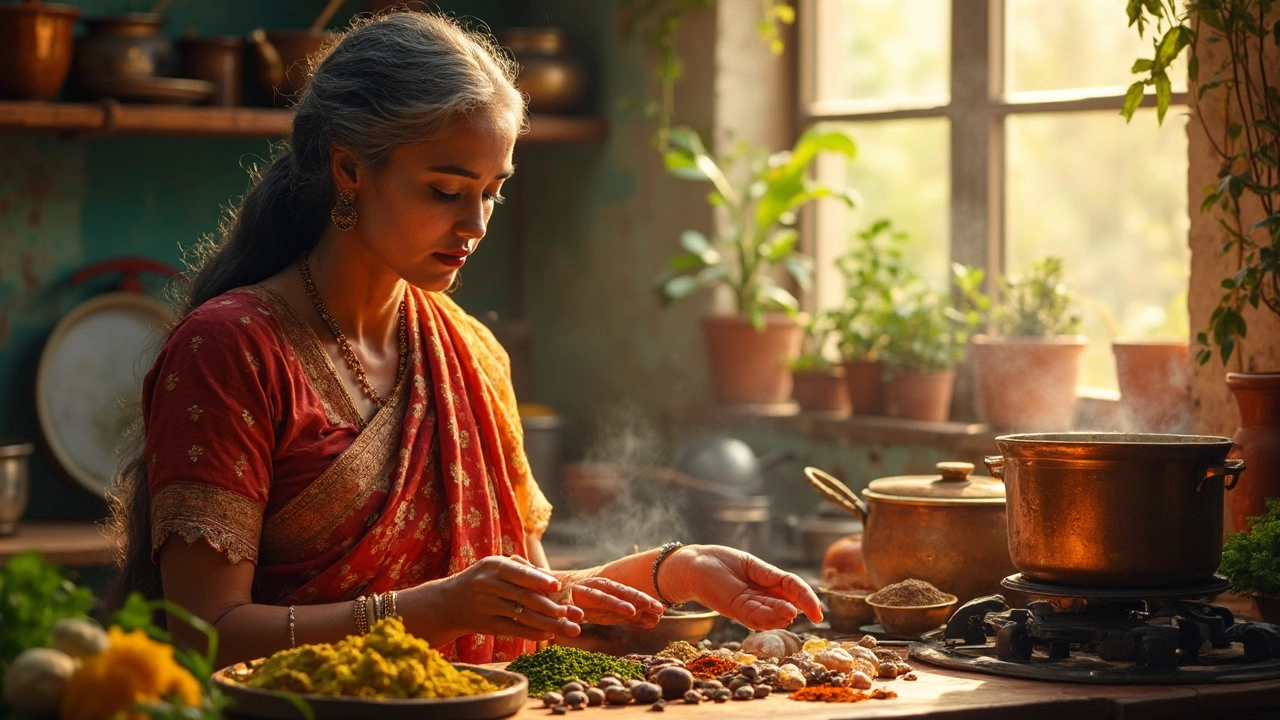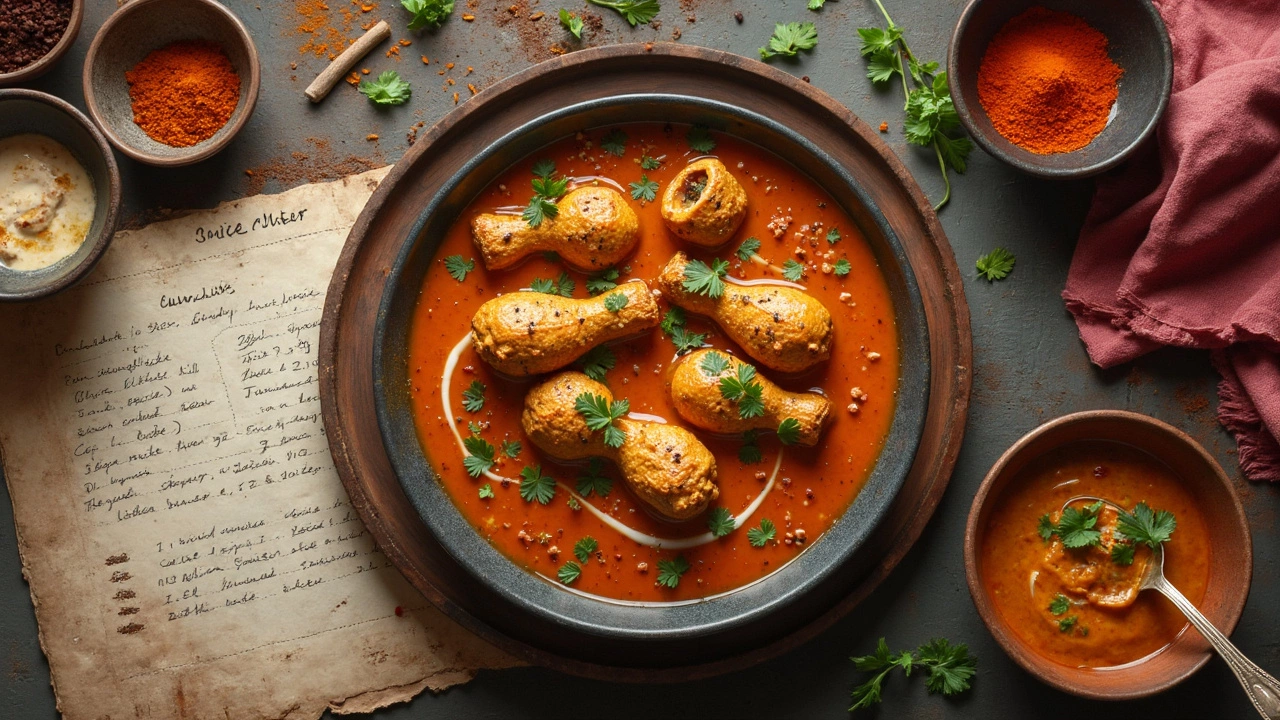What Makes a Delicious Curry? The Secret to Perfect Chicken Curry
 May, 6 2025
May, 6 2025
Ever tasted a chicken curry and immediately knew something was missing? It’s not magic. There’s a reason that auntie’s curry or local joint blows you away, and it usually comes down to the little things—like getting the spices just right or not being afraid to crank up the heat at the right time.
The truth is, even a simple chicken curry can turn absolutely mouthwatering with a few smart moves. You don’t need hard-to-find ingredients or special gadgets. What matters most is knowing why each step makes a difference. That means using the right spices—not necessarily the most expensive or the hardest to pronounce. And, trust me, how you treat your onions and tomatoes can make or break your curry base.
If you’ve struggled with chicken that turns out rubbery or with gravy that separates, you’re not alone. I’ve ruined enough curries myself to know those pain points. The good news is, small tweaks—like the way you marinate the chicken or how long you let onions brown—can change everything. Ready to crack the code? Let’s look at the simple, game-changing habits that make any chicken curry stand out.
- Picking the Right Spices
- The Power of the Curry Base
- Meat Matters: Chicken Done Right
- Finishing Touches and Common Mistakes
Picking the Right Spices
Let’s get straight to it: the backbone of any delicious chicken curry is the spice mix. You can't just toss random stuff into a pot and expect magic. There’s actually a method to it. Start with the basics—coriander, cumin, turmeric, and red chili powder. These aren't just for color; each adds a distinct flavor. Coriander gives earthiness, cumin brings that toasty punch, turmeric for warmth and color, and chili for heat. Missing any one of these, and your curry will feel flat.
What surprises a lot of folks is how the order and way you add spices matters even more than the ingredients themselves. Always fry your whole spices (like bay leaf, cinnamon stick, cardamom, and cloves) in oil first. This unlocks layers of flavor way beyond what ground spices can give by themselves. Then, add your powdered spices so they blend into the oil—this makes sure you don’t get that raw spice taste later. Don’t dump everything at once; the aromatics need their own moment.
For a solid Indian recipe, here’s a classic spice lineup that nails the flavor without going overboard:
- 2 tsp coriander powder
- 1 tsp cumin powder
- 1/2 tsp turmeric powder
- 1 tsp red chili powder (adjust to your heat level)
- Whole spices: 1 bay leaf, 4 cloves, 1 cinnamon stick, 2 cardamoms
For a quick comparison, check out the typical spice blend ratios for chicken curry in different regions:
| Region | Coriander | Cumin | Turmeric | Red Chili |
|---|---|---|---|---|
| North India | 2 tsp | 1 tsp | 1/2 tsp | 1 tsp |
| South India | 1.5 tsp | 2 tsp | 1/2 tsp | 1.5 tsp |
| Bengal | 2 tsp | 1 tsp | 1/2 tsp | 0.5 tsp |
If you want to play around, try adding a bit of garam masala near the end of cooking. It gives your curry that extra kitchen magic. Don’t forget salt. Under-seasoned curry tastes sad no matter how many pricey spices you buy. And if you ever feel lost, just smell the spices in your hand. If they don’t make you hungry, maybe it’s time for a fresh batch.
The Power of the Curry Base
The base is where every chicken curry either sinks or swims. A good curry base lays the foundation for all the flavor and aroma. You can’t just toss onions and tomatoes together and hope for the best. The magic happens because of what you do with those basics.
The big hitters are always onions, tomatoes, ginger, and garlic. But it’s not just about throwing them in the pot. You want your onions to go from raw to deep golden brown—almost caramelized. This releases their natural sweetness and dials up the base flavor. If you add your spices too early, they burn; too late, and you miss out on coaxing out their best flavors. Timing is everything.
Tomatoes break down and help thicken the gravy while adding acidity that balances all the heat and spice. Here’s a quick tip: cook the tomatoes until the oil starts separating from the mix. That’s a famous sign in Indian homes that your base is locking in the flavors. If you skip this, your curry may taste raw or bland no matter how much you tweak later.
"Letting onions and tomatoes break down properly is the make-or-break step for most Indian gravies. Rushing it is the biggest mistake beginners make." — Chef Ranveer Brar
Another thing that makes a real difference is water control. Too much and you’ve got a soupy mess, too little and you risk burning the base. Many home cooks swear by using a little curd or cream to round things out, but it’s not a strict rule—depends on the vibe of your chicken curry.
If you want even more oomph, try frying your spices in the hot oil before adding anything else. This, called ‘tempering,’ unlocks those big flavors. Just don’t walk away—burnt spices taste awful!
- Browning onions takes 10–15 minutes on medium heat. Patience pays off.
- Chop everything finely for a smoother gravy, or go chunky if you want rustic vibes.
- Keep tasting and adjusting as you go. There’s no ‘undo’ for overcooked masala.
- Add a splash of water if things stick to the bottom; it also keeps spices from burning.
If you ever wondered why the chicken curry in a friend’s home tastes so much deeper than the one at your place, it's almost always because they don’t rush the base. Simple as that.

Meat Matters: Chicken Done Right
Choosing the right chicken makes a huge difference in your chicken curry. If you want juicy, flavorful meat, opt for bone-in chicken pieces like thighs or drumsticks. These cuts have more fat and connective tissue, so they stay moist and soak up the spices better. Boneless breast cooks fast but can turn dry, especially if you simmer the curry for too long.
One of the simplest tricks for a delicious chicken curry is marinating the meat. A basic marinade of yogurt, turmeric, salt, and a little ginger-garlic paste does the job. Even 30 minutes makes a noticeable upgrade, but if you can leave it overnight in the fridge, the results are next level. The yogurt keeps the chicken tender, while the spices get a head start at flavoring the meat from the inside.
Here’s a solid, no-fuss marinade for about 1 kg of chicken:
- 1 cup plain yogurt
- 1 tablespoon ginger-garlic paste
- 1 teaspoon turmeric
- 1 teaspoon salt
- 1 teaspoon chili powder (adjust up or down for heat)
Mix, coat the chicken, and let time do its thing.
Another common mistake? Tossing cold chicken straight from the fridge into your hot curry. The temp drop can make the chicken cook unevenly. Let the meat sit out for 20–30 minutes before you add it in.
Cooking times matter. Chicken tastes best when it's fully cooked but still juicy—not boiled to death. Here’s a super basic table so you can get an idea for how long different cuts take:
| Cut | Cooking Time (Simmering in Curry) |
|---|---|
| Boneless Pieces | 12–15 min |
| Bone-in Pieces | 20–25 min |
Don’t rush the process. Add chicken after your curry base is well cooked and let the meat simmer gently, so it can absorb all those flavors. If you overcook it, you’ll just end up with dry chunks floating in your gravy—and nobody wants that in a delicious curry.
Finally, once the chicken’s cooked, let the curry rest for about ten minutes with the lid on. This locks in moisture and helps every part taste just right—my kids, Anaya and Rishi, swear by that extra rest time for max flavor. If you want a delicious curry, treat your chicken with patience and care.
Finishing Touches and Common Mistakes
This is the stage where a chicken curry can really go from good to jaw-dropping. The little details you add at the end matter a lot. First, always taste the gravy before switching off the heat. Adjust salt, squeeze a bit of lemon, or sprinkle some chopped coriander—it can lift the whole flavor profile. Don’t skip a drizzle of ghee or a spoon of cream if you want that restaurant finish. Just a bit goes a long way.
Let’s talk garnishes. Fresh coriander, a pinch of garam masala, or even a handful of fried onions can make your delicious curry pop. Some folks swear by roasted kasuri methi (dried fenugreek leaves). Just crush it in your palm and sprinkle on top for an aroma that will get the family running to the table. My kids—Anaya and Rishi—always get excited when the kitchen fills with that smell.
Now, the blunders. Don’t stress, everyone makes them, but here’s how you avoid the big ones:
- Rushing the onion stage. Under-cooked onions give a raw taste. Take the time to brown them properly before adding tomatoes or spices.
- Layering spices all at once. Spread out your spice additions so flavors build up instead of hitting you all at once.
- Using cold chicken. Cold, straight-out-of-the-fridge pieces can make the gravy seize up and split. Let the chicken rest at room temperature for 15–20 minutes before cooking.
- Adding too much water. If you want thick, hearty gravy, go easy on water. If it gets thin, just simmer uncovered to reduce.
- Leaving out acid. A squeeze of lemon or a dash of vinegar at the end lifts the flavor of your curry in a crazy way.
- Skimping on fresh herbs. Don’t skip that green touch. It’s not just for looks—it brightens everything up.
Curious about the impact of these steps? Home cooks who focus on finishing touches—according to a 2023 survey by a top Indian food magazine—reported 40% more satisfaction with their curries.
| Step | Impact on Final Curry |
|---|---|
| Squeeze of lemon | Balances out oiliness & brightens flavor |
| Add fresh herbs | Brings a fresh, vibrant finish |
| Final salt check | Prevents bland or over-salty dishes |
| Garam masala sprinkle | Adds fragrance and warmth |
At the end of the day, making a chicken curry that people love comes down to caring about the details. Don’t let the last steps be an afterthought—they’re what turns decent into unforgettable.